Web All in all as compared between the three countries the doctrine of separation powers is only theoretically and in reality. Discontinuous legislative power continuous legislative power and federative power.

Doctrine Of Separation Of Powers Lawlex Org
The issue of state separation of powers generally is not one that the federal courts have had much occasion to address.

. To that end they listed in Article 1 Section 8 of the. Let us take a look at some of the articles of the Constitution which suggest separation of. Web The doctrine of the separation of powers is embedded in this examination of cause and effect in the political system.
The judiciary should be independent and neutral to protect the rights and liberties of the people. The major questions cases however strongly suggest that when the Court decides a major question itself rather than let the executive branch do so the Court preserves congressional authority to legislate on major. Such a separation it has been argued limits the possibility of arbitrary excesses by government since the sanction of all three branches is required for the making executing and administering of laws.
In 1787 The founding fathers. It is not really practised. Web The term trias politica or separation of powers was coined by Charles-Louis de Secondat baron de La Brède et de Montesquieu an 18th century French social and political philosopher.
There should not be any influence or pressure from any parties but in this case the executive. The legislature cannot pass a law violating this principle. Recent issues have arisen however with respect to states use of private parties to enforce state anti-abortion regulations such as Texass Senate Bill 8 S.
It is part of the relationships of a particular type of legal system. Web The Monroe Doctrine was a United States foreign policy position that opposed European colonialism in the Western HemisphereIt held that any intervention in the political affairs of the Americas by foreign powers was a potentially hostile act against the United States The doctrine was central to American foreign policy for much of the 19th and early 20th. By having multiple branches of government this system helps to ensure that no one branch is more powerful.
The nation subscribes to the original premise of the framers of the Constitution that the way to safeguard against tyranny is to separate the powers of government among three branches so that each branch checks the other. And furthermore it is a necessary. Web By Bani Mahajan.
Separation of powers therefore refers to the division of government responsibilities into distinct branches to limit any one. His publication Spirit of the Laws is considered one of the great works in the history of political theory and jurisprudence and it inspired the Declaration of the. Web The doctrine of separation of powers is a part of the basic structure of the Constitution although not specifically mentioned.
8 and as to state legislatures claims of near-plenary powers. Web separation of powers division of the legislative executive and judicial functions of government among separate and independent bodies. Web Background It is safe to say that a respect for the principle of separation of powers is deeply ingrained in every American.
The Doctrine of Separation of Powers was proposed by Montesquieu in his work De lespirit des lois although the first thought of separating the legislative power was proposed by John Locke into. Web His publication Spirit of the Laws is considered one of the great works in the history of political theory and jurisprudence and under his model the political authority of the state is divided into legislative executive and judicial powers. Web The West Virginia Court claimed that the separation of powers justifies the major questions doctrine but failed to explain why.
Each branch has separate powers and. The functions of the three organs are specifically mentioned in the Constitution. Web Separation of Powers.
The term Separation of Powers was coined by the 18th century philosopher Montesquieu. Separation of powers is a model that divides the government into separate branches each of which has separate and independent powers. Separation of powers is a doctrine of constitutional law under which the three branches of government executive legislative and judicial are kept separateThis is also known as the system of checks and balances because each branch is given certain powers so as to check and balance the other branches.
It is no longer an isolated doctrine taken up when political advantage makes it expedient and put off when no longer needed. Web Enumerated powers are specific powers granted to Congress by the United States ConstitutionThe framers of the Constitution wanted to ensure the new federal government would not become an overreaching entity that might subject the people to the oppression from which they had fled.

Separation Of Powers Legal Paathshala
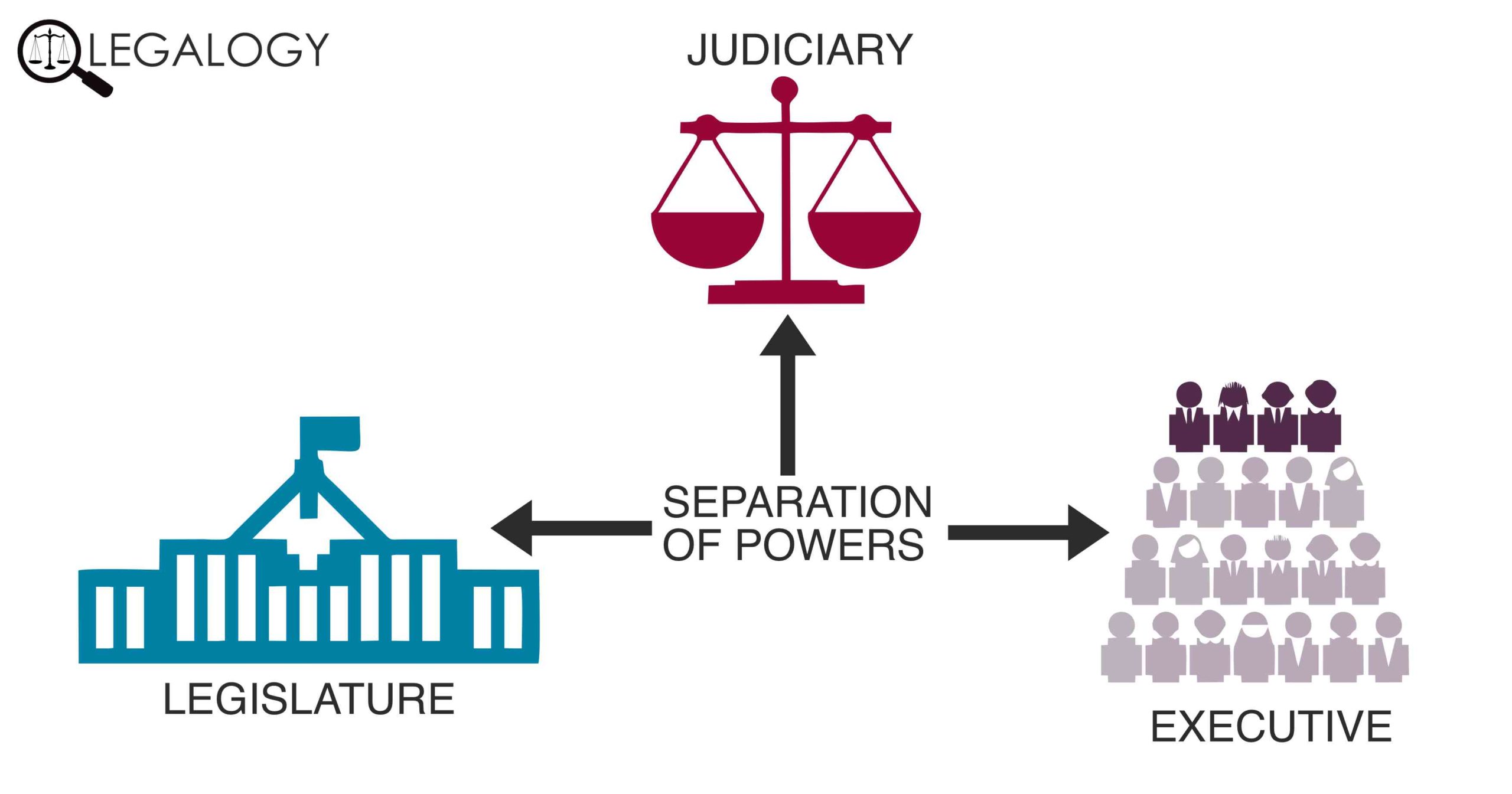
Doctrine Of Separation Of Powers Legalogy
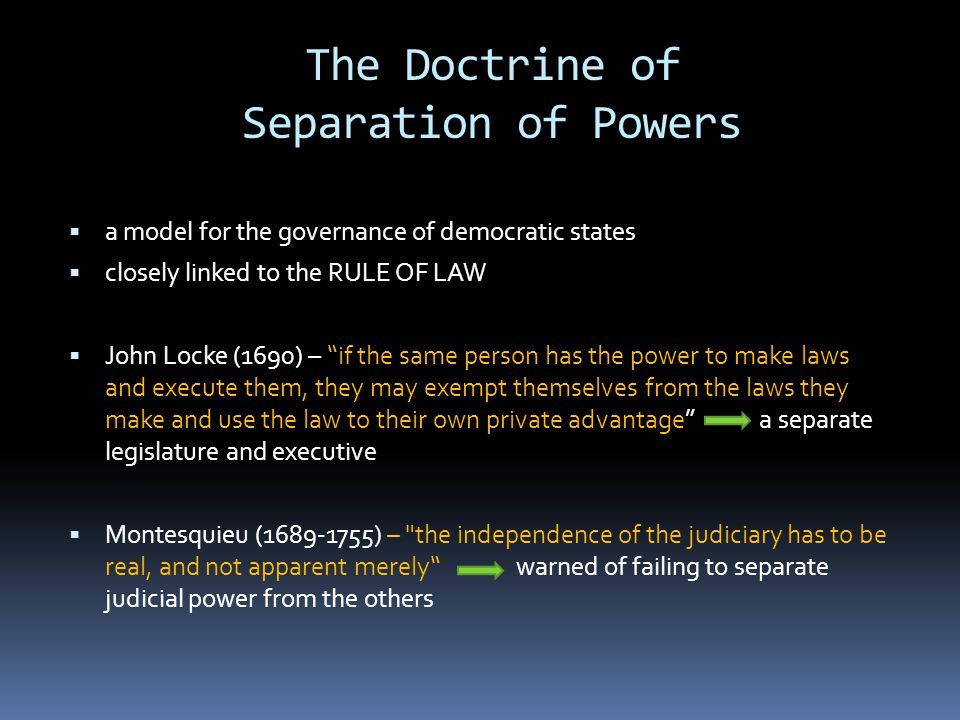
Unit 3 Separation Of Powers Statute Law In Britain Ppt Download

Separation Of Powers Uk Usa And India
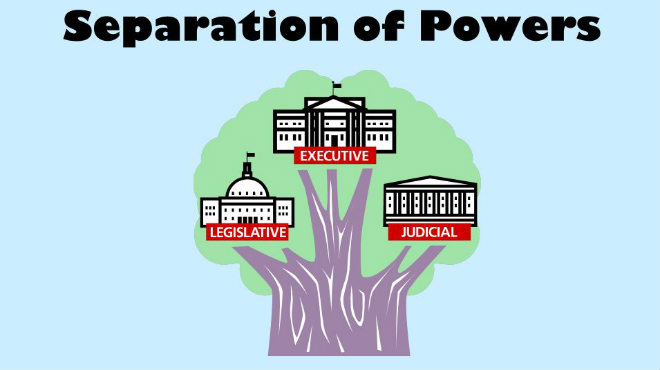
Montesquieu S Theory Of Separation Of Powers How It Has Been Adopted In India Lawsisto Article News
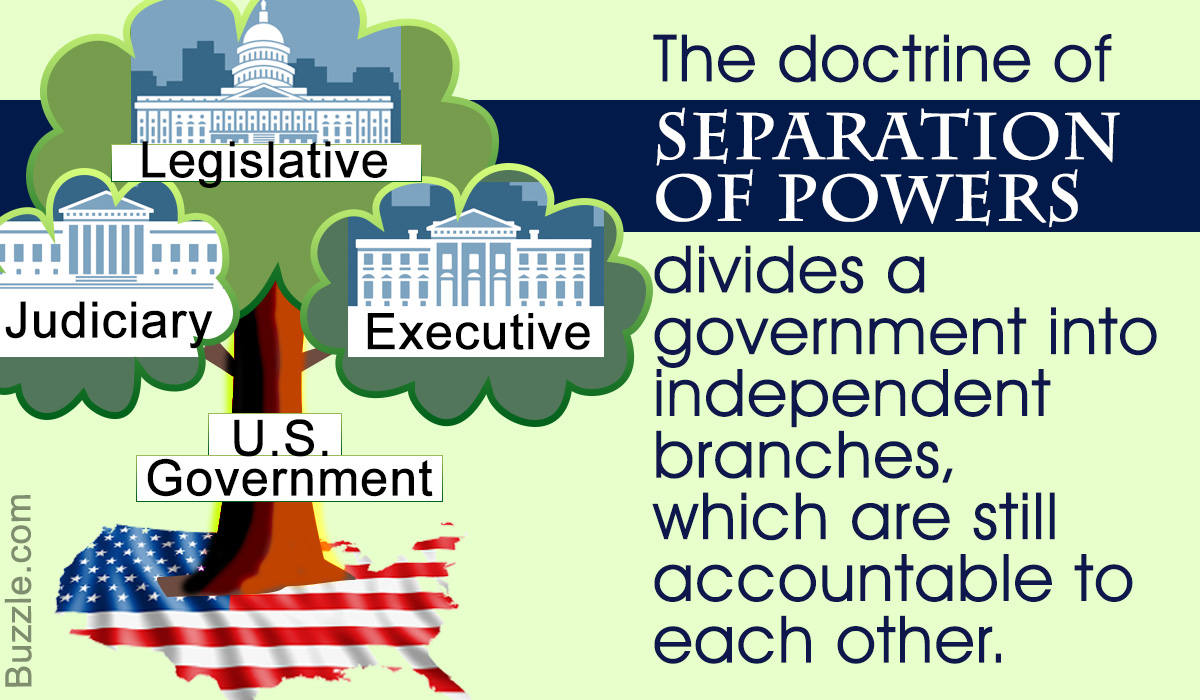
An Explanation Of Separation Of Powers With Relative Examples Opinion Front

Doctrine Of Separation Of Power

Doctrine Of Separation Of Powers Doctrine Of Separation Of Powers Separation Of Powers Are Also Studocu

The Trias Politica Of The Doctrine Of The Separation Of Powers Download Scientific Diagram

Doctrine Of Separation Of Powers
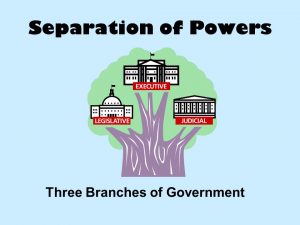
Public Law Separation Of Power The Lawyers Jurists
Futurechallenges The Separation Of Powers In Australia

Theory On Principle Of Separation Of Powers

Doc The Montesquieu Doctrine Of Separation Of Powers Rehema Uroki Academia Edu

The Doctrine Of Separation Of Powers Explained By The Phoenix Brain On The Table Medium

The Doctrine Of Separation Of Powers Cishe 2013 Download Scientific Diagram

Doctrine Of Separation Of Power

Theory Of Separation Of Powers

